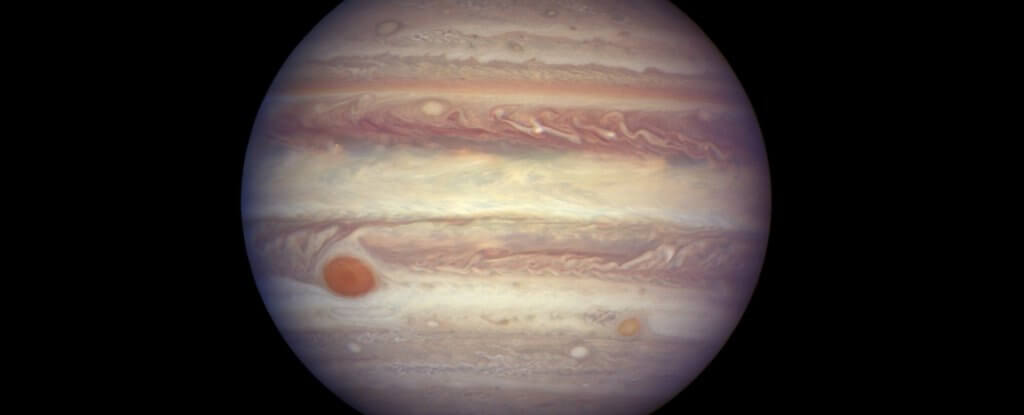
Over the past few years, the activity and the scale of Solar system research have become much higher volumes of studies observed in the last few decades. The rate of these studies and don’t think to slow down. Mankind began to look not only at the nearest cosmic neighbour Mars, but with great enthusiasm and the prospect looks more distant corners of our home system. What’s next? This question can only be answered by time. And today let’s remember once again how awesome is our home.

The atmosphere of Saturn, taken from as close as possible to the moment distances. Photo was obtained with the automatic interplanetary station “Cassini”. In the autumn of this year the probe will complete its mission, forever plunging into the dense atmosphere of a gas giant. As it happens, we already showed you

Amazing details of Saturn’s atmosphere

Another picture of the atmosphere of this gas giant. Mankind’s first opportunity to take a look at these detailed images of this planet

The rings of Saturn and one of the satellites of the gas giant, Mimas. The people also called the “death Star”. And deservedly so, it should be recognized. You can verify this by looking at the photograph below. Obvious similarity with the planetary destroyer of the cult of the universe of “Star wars”


Raw photo of one of Saturn’s moon, Titan. The image was obtained in the last final rendezvous with the planet

The image obtained aerospace Agency, NASA, shows an amazing Jupiter. The photo was taken from a distance of about 668 million kilometers from Earth. At this point, the orbit of the gas giant lay as close to our planet. This opportunity did not fail have used the space telescope “Hubble”

This image was acquired on March 27, the spacecraft “Juno”. The photo was taken from a distance of about 14 500 miles above the upper atmosphere of Jupiter, and displays its unpredictable features

Picture of Pluto, illuminated by a halo of sunlight was received in March 2017, the spacecraft “New horizons” when he had retired from the planet at a distance of 193,000 kilometers

This raw photographs taken by the spacecraft Cassini and published on 7 March this year, shows the tiny moon of Saturn, pan. The picture was taken from a distance of 24 571 kilometer. This is the detail you put into the pan at the moment. Photo allows you to see in the quaint shape of the satellite and learn about its Geology

The photo was published on March 2, 2017. You can see the Phobos – the largest of the two satellites of Mars. The image obtained by the camera Imaging Science Experiment mounted on a space orbital Mars Reconnaissance Orbiter NASA

Spacecraft “Giugno” February 2, flew directly over the South pole of Jupiter and took this photo from a distance of almost 102 000 kilometers above the surface the clouds of the planet. The photo was processed and acquired color. This allows you to become more familiar with the characteristics of clouds and numerous storms in the atmosphere of this gas giant

This photograph was published by the European space Agency on 2 February. It shows the cap of the North pole of Mars, as well as the deep canyon of the North. This giant geological feature almost parts of the ice cap of the planet in two

It is a composite color image of the moon and the Earth, created on the basis of pictures obtained by the orbiting satellite and the GOES-16 in mid-January of this year. Companion at this point was at an altitude of almost 36,000 kilometers above the planet’s surface

Photo of the giant spot on the Sun posted on 17 January, was received by the ALMA Observatory. The phenomenon is a phenomenon that occurs due to the extremely strong concentration of the magnetic field strength

The image of the Martian plains of Utopia received 10 January

The planet Venus (left), which is often called the evening star, and Crescent. The photograph was received on 3 January in Manila
#gallery | This amazing Solar system
Nikolai Khizhnyak